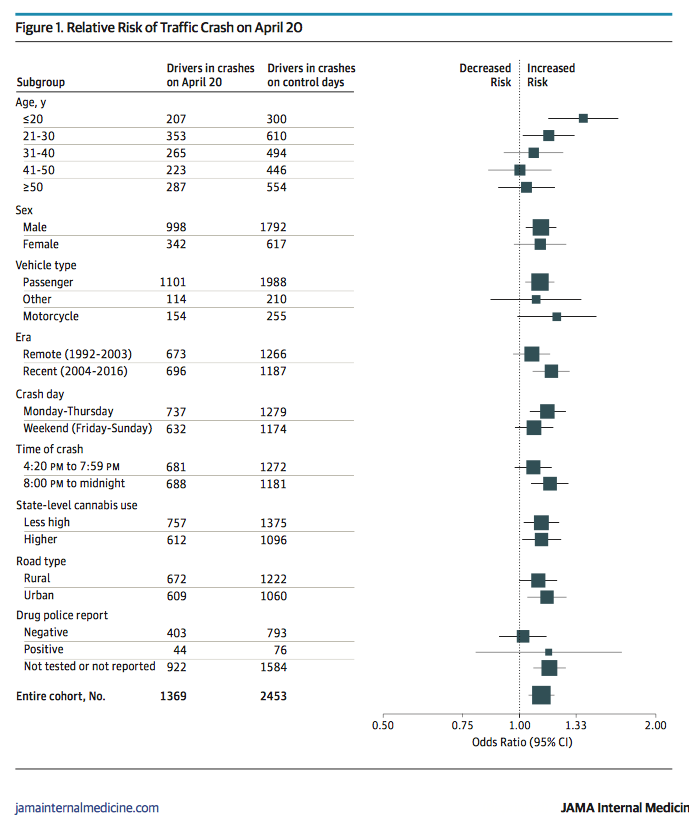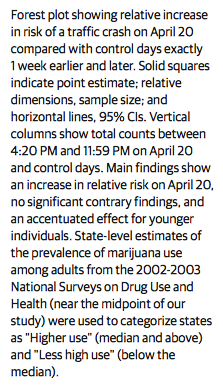The results from a new study about marijuana use on the drug's so-called "High Holiday" might convince some drivers to steer clear of the roads that night.
Researchers sought to learn whether there was any added risk of driving on April 20 – a recognized day of celebration in the United States among pot enthusiasts – when marijuana use is trumpeted and encouraged and legal sales are noticeably higher. And after examining 25 years of traffic crash data, what they found was a 12 percent increased risk of a fatal car crash taking place that day after 4:20 pm, the unofficial kickoff time of the drug's holiday.
 Using "fatal motor vehicle crash data from the United States National Highway Traffic Safety Administration’s Fatality Analysis Reporting System (FARS)," these researchers, from the University of British Columbia and the University of Toronto, undertook a comparison of traffic deaths occurring on April 20 between 4:20 pm and midnight, versus those taking place one week earlier (April 13) and one week later (April 27) from the years 1992 to 2016. Those served as the control days.
Using "fatal motor vehicle crash data from the United States National Highway Traffic Safety Administration’s Fatality Analysis Reporting System (FARS)," these researchers, from the University of British Columbia and the University of Toronto, undertook a comparison of traffic deaths occurring on April 20 between 4:20 pm and midnight, versus those taking place one week earlier (April 13) and one week later (April 27) from the years 1992 to 2016. Those served as the control days. 
FARS data showed that in that quarter century, there were 1,369 drivers involved in a motor vehicle crash during that 7-hour-40-minute window "on public roadways in which at least 1 participant died within 30 days of the event," the authors reported. On the two control days, there were 2,453 similar incidents combined – an average of 1,226 per day, or 12 percent less.
Researchers working on the study, published in JAMA Internal Medicine, found that prior to the holiday's unofficial start time risk did not increase.
"As expected, the number of drivers involved in crashes, earlier than 4:20 PM or on nearby dates (April 18 and April 22)," wrote the study's authors, "was no different than corresponding controls."
Among the drivers' subgroups, one stood out. As the adjacent chart from the study shows, those under 20 years old demonstrated a much higher relative risk.
Geographically, researchers reported that "absolute risk increases" were highest in New York, Texas and Georgia, respectively, and only in Minnesota did they find that "[r]elative risk was significantly reduced."




